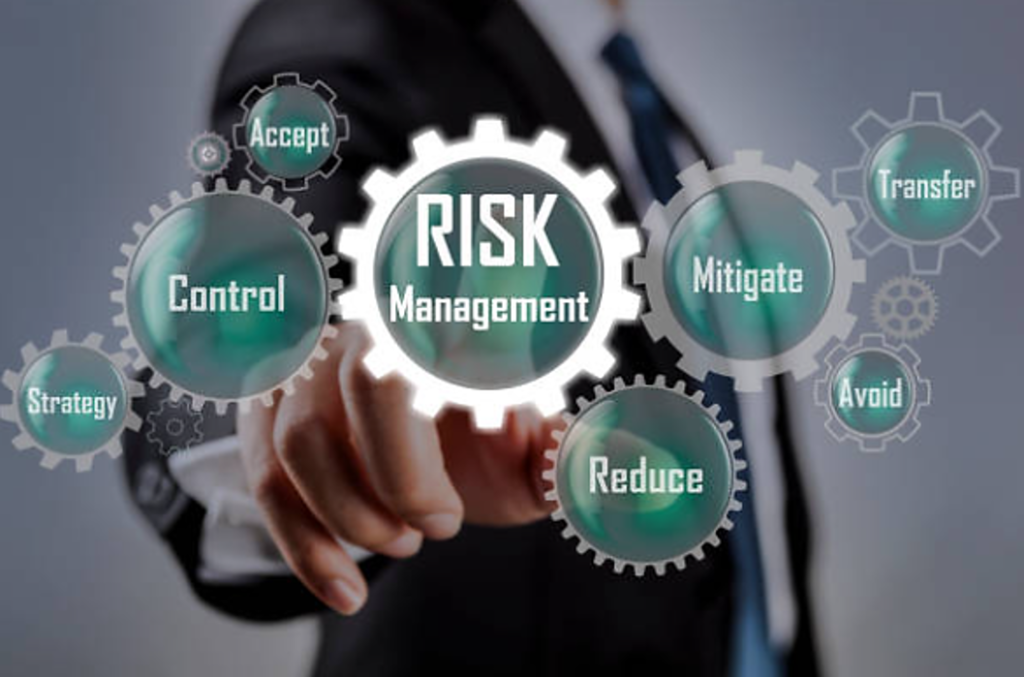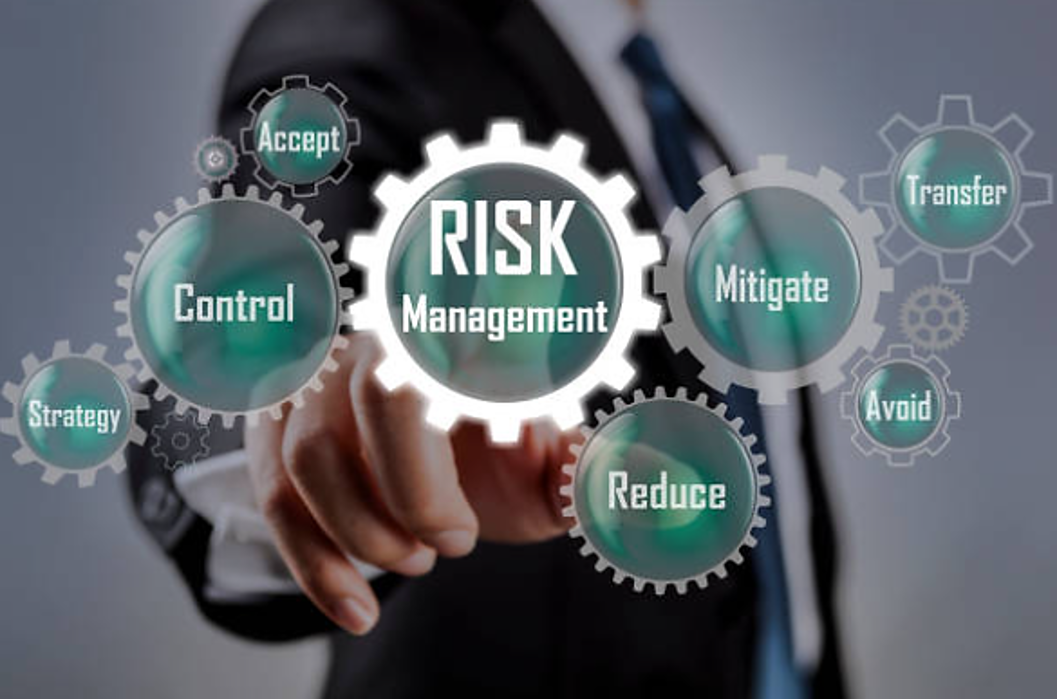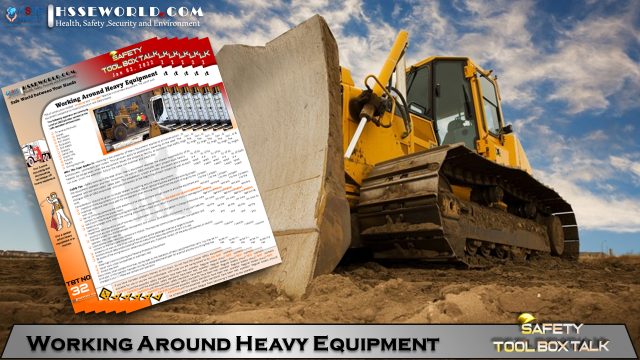Risk management is a critical aspect of maintaining a safe and efficient workplace. I recognize that it involves identifying, assessing, and controlling threats to an organization’s capital and earnings. These risks could stem from a variety of sources, including financial uncertainties, legal liabilities, technology issues, strategic management errors, accidents, and natural disasters.As part of managing the health and safety of your business, you must control the risks in your workplace. To do this you need to think about what might cause harm to people and decide whether you are taking reasonable steps to prevent that harm. This is known as risk assessment and it is something you are required by law to carry out. If you have fewer than five employees you don’t have to write anything down.

Understanding the Fundamentals of Risk Management
A well-structured risk management process is foundational to addressing these uncertainties. At its core, risk management includes several fundamental steps:
- Risk Identification: I begin by pinpointing potential risks that could negatively impact the workplace. This requires thorough analysis of day-to-day operations and staying informed about external factors that could introduce risk.
- Risk Analysis: Once identified, I evaluate the risks to understand their potential severity. Analysis might involve qualitative methods, like scenario analysis, or quantitative methods like statistical models.
- Risk Assessment and Prioritization: Here, I assess each risk in terms of its likelihood and potential impact on the business. Prioritizing risks allows me to focus resources on controlling the most critical threats first.
- Risk Control and Mitigation: After assessment, I develop strategies to manage or mitigate risks. This might involve implementing safety measures, improving processes, or purchasing insurance.
- Monitoring and Reviewing: As I implement risk control strategies, I continuously monitor them for effectiveness and make adjustments as needed. The dynamic nature of risk means that this process is ongoing.
By following these steps, I ensure that risk management is not a one-time task but an integral part of the organization’s culture. It’s about creating a proactive, anticipatory approach to potential problems, rather than merely reacting when they occur.
Building a Culture of Safety and Awareness
As a professional tasked with risk management at my workplace, I understand that the foundation of any effective safety protocol lies in shaping the organization’s culture. I acknowledge that developing a culture of safety and awareness among employees is critical and I continuously strive to cultivate an environment where safety is a shared value and responsibility.
To build this culture, I begin by leading by example. I wear the appropriate protective equipment, follow all safety guidelines, and never take shortcuts that compromise safety. By demonstrating these behaviors, I set an expectation for others to do the same. ( Also read: designing-an-effective-ppe-program-5-tips)
I also prioritize regular and comprehensive training programs. These are essential for making sure employees are aware of the potential risks and the correct ways to mitigate them. I advocate for engaging training sessions that include:
- Hands-on exercises that simulate real-life scenarios
- Discussion forums where employees can share concerns and solutions
- Quizzes and refreshers to reinforce knowledge retention
I emphasize the importance of open communication by establishing multiple channels through which employees can report hazards or near-misses without fear of retribution. A critical aspect of this is implementing an anonymous reporting system as well as routine safety meetings to discuss issues openly.
Furthermore, I recognize that rewarding and acknowledging safe behavior motivates employees to maintain high safety standards. I therefore:
- Create incentive programs for individuals or teams who exemplify strong safety practices
- Share success stories to highlight the importance of safety in the workplace
- Offer constructive feedback aimed at continuous safety improvement
Lastly, I regularly review and update safety policies to align with evolving workplace environments and technologies, ensuring that our culture of safety and awareness remains dynamic and proactive, adapting to new challenges that may arise.
Also Read: Enhancing-performance-health-and-safety-culture/

Audit Risk Assessment Made Easy
Seeing What Others Miss
Identifying Potential Hazards: The First Step to Prevention
Identifying potential hazards in the workplace is paramount to ensuring the well-being of employees and the operational integrity of any business. I approach this initial stage with meticulous attention to detail, as it forms the cornerstone of preventative measures that follow.
When I walk through various work environments, I look out for anything that might pose a risk to personnel, equipment, or processes. This involves an assessment that considers both immediate dangers and those that could manifest over time. In my assessments, the following key points are always on my checklist:
- Physical Hazards: These include obstructions in walkways, poor ergonomics, and any equipment that could lead to injury through misuse or malfunction.
- Chemical Hazards: I check for proper storage and handling of chemicals, as well as potential exposure to toxic substances.
- Biological Hazards: The risk of exposure to infectious materials is a concern in many workplaces, especially those within healthcare settings.
- Environmental Hazards: Factors like noise, air quality, and lighting are examined for their long-term effects on employee health.
- Psychosocial Hazards: I also recognize the importance of aspects such as workplace stressors, the potential for harassment, and other factors affecting mental well-being.
- Ergonomic Hazards: These involve scrutinizing workstations and the design of work tasks to prevent musculoskeletal disorders.
Through staff interviews and consultation with process experts, I ensure that no stone is left unturned. Additionally, reviewing incident reports and workplace injury records provides valuable insights into recurring or previously unaddressed issues.
By systematically addressing each potential hazard category, I establish a solid foundation for the subsequent risk analysis and management process. My aim is to preemptively eliminate or mitigate risks before they translate into incidents or accidents, thus affirming the old adage: prevention is better than cure.
Risk Assessment: Evaluating and Prioritizing Workplace Risks

In my role as a risk management professional, I’ve learned that conducting a thorough risk assessment is essential to understanding the full range of potential risks in the workplace. Here is my approach to evaluating and prioritizing these risks:
Identification of Potential Risks
Firstly, I identify all potential risks. I consider everything from operational, strategic, and financial risks to hazards that could impact health and safety. By consulting with cross-departmental teams, I ensure a comprehensive list that includes risks at all levels and from various perspectives.
Evaluation of Risk Likelihood and Impact
Once identified, I evaluate the likelihood of each risk occurring and its potential impact. Some risks might be highly unlikely but catastrophic, while others could be minor but frequent nuisances. This step involves:
- Quantitative analysis, like examining historical data
- Qualitative measures, such as expert judgments and scenario planning
Establishing Priorities
Prioritization is vital to manage risks effectively. I prioritize risks using a matrix that classifies them by their likelihood and the severity of their impact. This way, I can focus on the most significant threats first. High-impact, high-likelihood risks get the utmost attention, followed by high-impact, low-likelihood risks, and so forth.
Planning for Risk Mitigation
With priorities established, I develop strategies to mitigate each risk. This includes assigning responsibility to team members, setting up protocols, and creating contingency plans.
Continuous Monitoring
Finally, risks fluctuate, and new ones emerge. Continuous monitoring ensures that the risk assessment stays current. I regularly review and revise risk priorities and mitigation plans as necessary to adapt to changing circumstances within the workplace.
By systematically evaluating and prioritizing risks in this manner, I lay a solid foundation for comprehensive risk management in the workplace.
Implementing Control Measures to Mitigate Identified Risks
After identifying and assessing workplace risks, I prioritize implementing control measures to mitigate them. This involves a systematic approach to ensure the workplace remains safe and compliant with health and safety regulations. Here’s how I go about it:
- Develop a Plan: I draw up a detailed plan outlining the specific measures for each identified risk. This plan specifies the resources required, responsible individuals, and timelines for implementation.
- Hierarchy of Controls: I use the hierarchy of controls as a guiding principle:
- Elimination – Remove the hazard completely.
- Substitution – Replace the hazardous process or material with a less dangerous one.
- Engineering Controls – Redesign systems or equipment to reduce exposure.
- Administrative Controls – Implement policies or procedures to limit the risk.
- Personal Protective Equipment (PPE) – Provide PPE only when other measures are insufficient.
- Engage with Employees: I involve employees in the decision-making process to ensure they understand and adopt the control measures. This also enhances the measures’ effectiveness as employees often provide practical insights based on their experience.
- Training and Education: I organize regular training sessions for all staff members. This ensures that they are aware of the best practices, how to use new equipment, or follow revised procedures.
- Continuous Monitoring: Even after implementation, I keep a watchful eye on the effectiveness of control measures. This ongoing process includes regular inspections, audits, and review meetings.
- Update Documentation: I maintain accurate records of all risk management activities, including the implementation of control measures. This documentation helps in the continual improvement of workplace safety and compliance.
By following these steps, I ensure that the workplace is not just reacting to risks, but proactively managing them, thereby creating a safer, more productive environment for everyone.
Developing a Comprehensive Communication Strategy
In managing risks in the workplace, communication is pivotal. Therefore, as a risk management professional, I ensure that developing an effective communication strategy is a central part of my approach. This strategy encompasses various components:
- Initial risk identification
- Engaging stakeholders
- Clarifying procedures
- Establishing reporting channels
- Continual update and training mechanisms
Initial Risk Identification
Firstly, it is crucial that I clearly communicate potential risks to all relevant parties. This involves disseminating information on what could go wrong, and under what circumstances, using clear and concise language.
Engaging Stakeholders
Then, I bring stakeholders into the conversation. I organize brainstorming sessions and workshops where employees, management, and external partners can contribute their insights. This collaborative effort ensures comprehensive identification and understanding of risks.
Clarifying Procedures
Next, defining and elucidating risk management procedures is of the essence. I design easy-to-understand guides and protocols that outline the steps to be taken when a risk is identified.
Establishing Reporting Channels
As I cultivate a culture of transparency, I set up efficient reporting channels. These are clear pathways through which anyone can report a risk or a near-miss without fear of repercussions.
Continual Update and Training Mechanisms
Finally, I recognize that risk management is an ongoing process. I regularly schedule training sessions to keep everyone updated on new risks and procedures. By simulating scenarios and conducting drills, employees stay prepared for actual risk events.
Through a well-structured communication strategy, I aim to ensure risks are not just understood, but effectively managed with the concerted effort of the entire workplace. This proactive approach is key to mitigating risks and fostering a safe work environment.
Training and Educating Employees on Risk Management
Effective risk management is not solely the responsibility of a single department or individual in an organization. It is imperative for me, as a leader or risk management professional, to ensure that each employee understands their role in mitigating risk. Training and educating employees about risk management starts with establishing a strong culture around its importance.
Firstly, I initiate comprehensive orientation sessions for new hires to instill risk awareness from day one. During these sessions, I walk through our company’s risk management policies, procedures, and the tools we use. I also illustrate how risk can impact not just the company, but our individual roles.
To encourage continuous learning, I schedule regular training workshops. Each workshop is tailored to different roles and departments, addressing the specific risks they may encounter. For example, the IT department receives training on cybersecurity threats, while the finance team is educated about compliance and financial risks.
Moreover, I use real-life scenarios and simulations to make the training more effective. Employees participate in role-plays and tabletop exercises designed to deal with potential risk events. These practical experiences reinforce their understanding and application of risk management principles.
I also believe in leveraging technology to enhance learning. Using e-learning platforms, I ensure that employees have access to up-to-date risk management resources and can undertake self-guided learning at their own pace.
Lastly, I keep an open line of communication for any questions or concerns regarding risk. A quarterly ‘risk roundtable’ allows employees to share their insights and discuss emerging risks, broadening everyone’s perspective.
A well-trained workforce is the backbone of a robust risk management strategy. By investing in my team’s education and understanding of risk, I contribute to a safer and more proactive work environment.
- Downlaod : Hazard Identification Techniques-Power point
- Attend course : Fundamentals of Hazard Identification Techniques
Monitoring and Reviewing Control Measures Regularly
As part of my ongoing commitment to maintaining a safe workplace, I understand the importance of not only implementing control measures but also regularly monitoring and reviewing them. This is crucial because it helps to ensure that the measures continue to be effective and adapt to any changes in the workplace or to the risks themselves.
To sustain the highest level of risk management:
- I schedule regular evaluations of all control measures. This includes examining whether they are still appropriate, in good working order, and effective in reducing or eliminating risks.
- I look for new or emerging hazards that may not have been present during the initial risk assessment and modify control measures accordingly.
- I engage with employees to gather feedback on the functionality and effectiveness of control measures. Their practical insights can be invaluable as they work with these controls daily.
- I review the outcomes of any incidents or near misses to determine if the existing control measures were sufficient or need improvement.
- I keep abreast of advancements in technology and best practices within the industry, as these could necessitate updates to our control measures.
- I also ensure that any changes in legislation or compliance requirements are reflected in our risk management strategies.
By diligently monitoring and reviewing the control measures in place, I can make informed decisions about whether they need adjustments or enhancements. This proactive approach not only helps in maintaining safety standards but also demonstrates to employees and stakeholders that risk management is an ongoing priority at our workplace.
Incident Reporting and Investigation: Learning from Near Misses
As part of effective risk management, I understand the criticality of not just addressing actual incidents, but also investigating and learning from near misses. A ‘near miss’ is an event that, while not causing harm, has the potential to result in an accident or injury. These occurrences are vital warning signs and learning moments.
Firstly, I ensure that a clear incident reporting system is in place, which encourages all employees to report near misses. The system needs to be user-friendly, accessible, and ensure reporters that their concerns will be taken seriously without fear of reprisal. I train my staff to recognize what constitutes a near miss and the importance of reporting them.
- Make reporting easy and anonymous if necessary
- Provide sufficient training on what constitutes a near miss
- Encourage a culture of safety where reporting is valued
Once reported, I initiate a thorough investigation. My aim is not to assign blame, but to understand the root causes. It could be a lapse in safety protocols, a failure in equipment, or a lack of adequate training.
- Investigate to understand root causes, not to place blame
- Include a cross-functional team in the investigation
With the information from investigations, I take steps to prevent future occurrences. This might involve updating policies, retraining staff, or making physical changes to the work environment.
- Update policies and procedures as necessary
- Retrain staff on new protocols
- Adjust the work environment to mitigate risks
Finally, I close the loop by sharing the learnings from the investigation with the entire organization. This transparency not only reinforces the culture of safety but also empowers employees to proactively manage their work environment.
- Share outcomes and learnings with all employees
- Foster a proactive approach to risk management
By continually learning from near misses, I actively refine our risk management strategies and foster an increasingly safe workplace.
Continuous Improvement in Risk Management Practices
As I consider the dynamic landscape of risk management at the workplace, I am reminded that this field is far from static – it necessitates ongoing evolution to remain effective. Here’s how I approach continuous improvement in risk management practices:
- Review and Feedback Loop
- I regularly schedule risk management review meetings. It’s during these sessions that we look at what’s working, what isn’t, and how we can improve. Feedback from all levels of staff is crucial — those on the ground often have valuable insights into risks and their potential solutions.
- Benchmarking
- I keep an eye on industry standards, which are always shifting. By benchmarking our practices against leading organizations, I can identify areas for enhancement.
- Training and Development
- Ongoing education is vital. I ensure that the team and I are up-to-date with the latest risk management strategies and technologies. This includes participating in workshops, webinars, or even obtaining relevant certifications.
- Technology Integration
- Advancements in technology offer new tools to manage risk. I regularly explore and adopt technology solutions that can automate processes, offer better predictive analytics, or enhance incident reporting and monitoring.
- Adaptability to Change
- Our workplace’s risk management strategy needs to be flexible. If there are significant changes in our operating environment, I am prepared to reassess and adjust our practices rapidly.
- Incident Analysis
- When incidents do occur, they serve as invaluable learning opportunities. I conduct thorough analyses to understand the root cause and to prevent recurrence. This is also an essential step in refining our risk management approach. ( Read: Overview of Lost Time Incident Rate and its Calculator )
Through these measures, I strive to achieve not just a robust risk management system but one that is consistently honed to address the changing nature of workplace risks. It’s a journey without a final destination but rather a series of milestones that continuously raise the standard of safety and security at work.
Ensuring Compliance with Legal and Regulatory Requirements
When managing risk in the workplace, one of the pivotal areas I focus on is adherence to the various legal and regulatory requirements. This involves a multi-step process that helps ensure the organization not only minimizes risks but also avoids the serious repercussions of non-compliance, such as fines, penalties, or reputational damage.
- Stay Up-to-Date with Laws and Regulations: I continuously monitor and stay informed about current and upcoming laws that impact our industry and operations. This is a dynamic area, where regulations can change, and failure to stay abreast can be costly.
- Implement Policies and Training: I develop and implement policies that align with legal requirements. It’s essential that all team members understand these policies, so I also coordinate comprehensive training sessions. Documentation of this training serves as proof of compliance.
- Regular Audits and Assessments: To ensure continued compliance, I conduct regular audits and risk assessments. Through these audits, I identify any gaps in compliance and take corrective action immediately.
- Engage with Experts: Complex legal environments often require specialized knowledge. I don’t hesitate to consult with legal experts or compliance officers to gain insights into nuanced areas of the law.
- Record-Keeping and Documentation: I maintain meticulous records of all compliance-related activities. This documentation not only serves as evidence of compliance but is also valuable for reviewing past actions and making informed decisions for future risk management strategies.
- Communicate Compliance Requirements to Suppliers and Contractors: Risk can also originate from third parties. I make sure that our suppliers and contractors are aware of and comply with relevant legal and regulatory requirements. This is often managed through contractual agreements which include compliance clauses.
It’s worth noting that compliance is not a one-time task but an ongoing effort. By integrating these steps into everyday operations, I aim to create a culture of compliance within the organization. This proactive stance on legal and regulatory requirements is a cornerstone of effective risk management in the workplace.
Use : Annual Internal Audit Form
Utilizing Technology and Tools for Enhanced Risk Management
In today’s digital landscape, I find it imperative to integrate advanced technology and tools into my risk management strategy. Leveraging these resources not only facilitates data-driven decision-making but also significantly boosts efficiency and accuracy in identifying and mitigating workplace hazards.
One of the first steps I undertake is to employ a comprehensive risk management information system (RMIS). This powerful software centralizes and streamlines the collection, analysis, and reporting of risk data. One noticeable benefit of RMIS is its ability to swiftly identify trends and potential risk hotspots through real-time data analytics. It also aids in regulatory compliance by ensuring that all risk-related documentation is up-to-date and easily accessible.
Another key tool I utilize is predictive analytics, which allows me to forecast potential risks before they manifest. By analyzing past incidents and near-misses, I can use predictive models to anticipate future issues and take proactive measures to prevent them.
To further augment the risk management process, I implement mobile applications that enable staff to report hazards and incidents on the go. Such tools empower employees to contribute to a culture of safety and ensure swift action can be taken to address reported concerns.
Lastly, I ensure that communication channels facilitated by technology, such as instant messaging and alerts, are in place. These systems are crucial for disseminating information quickly and clearly during critical situations, thus minimizing the impact of any risks that do arise.
In harnessing the power of technology and tools, I am able to refine my approach to risk management, making it more dynamic and responsive to the ever-evolving nature of the workplace.
Artificial Intelligence as Your Safety Net: AI Innovations for a Safer Work Environment
Engaging Employees in Risk Management Solutions
Engaging employees in risk management is crucial for creating a sustainable and protective environment in the workplace. I believe that the involvement of employees not only aids in identifying potential risks but also in developing practical and effective solutions. To involve employees effectively in risk management, I initiate several key steps.
Firstly, I organize regular training sessions that cover various aspects of risk identification and management. These sessions are designed to be interactive, allowing employees to raise concerns and contribute their insights. By doing this, I ensure that all team members are not only aware of how to spot risks but are also comfortable in doing so.
Secondly, I establish clear channels of communication for reporting risks. Whether it is through a digital platform, suggestion box, or regular meetings, employees must know how and where they can report any potential dangers they have noticed. This accessibility encourages them to take an active role in safeguarding their environment.
Moreover, I include employees in the risk assessment process. By inviting them to share their experiences and observations, I can make assessments that accurately reflect the day-to-day workings of the workplace. This strategy helps to identify risks that might not be obvious to management but are well-known to the employees.
Furthermore, I create a sense of ownership among employees by involving them in creating action plans. When they are part of the solution-building process, they are more likely to be committed to the implementation and success of these solutions.
Lastly, I recognize and reward the contributions of employees towards risk management. By celebrating those who actively participate in this process, I not only reinforce their actions but also motivate others to engage.
In embedding these practices into the workplace culture, I create a unified front against risks, where every employee has a role to play and feels valued for it.
Download Many Resources at :




